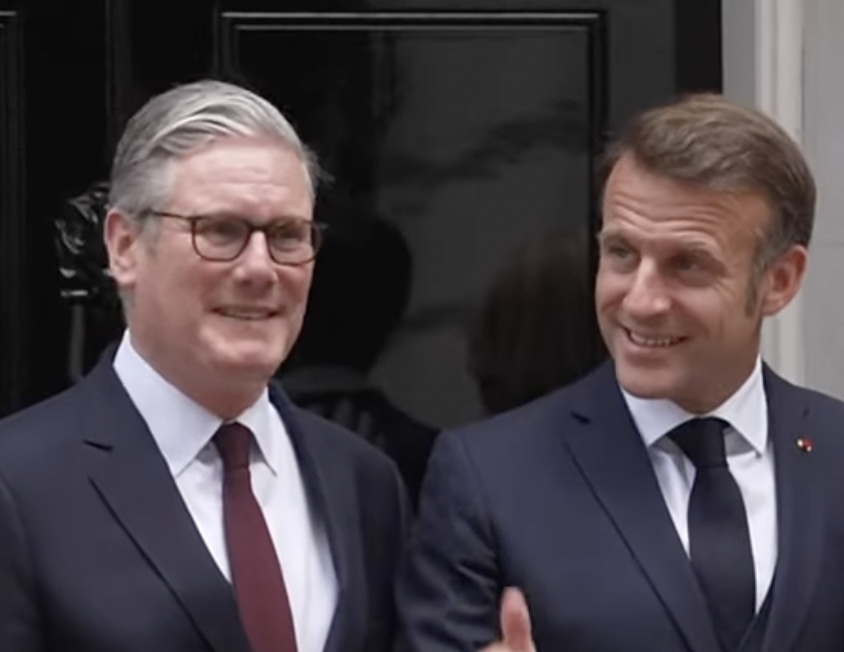


In an era marked by sharpening threats and resurgent great power competition, Britain and France are once again looking to the future—shoulder to shoulder, missile to missile. Today’s refreshed defence agreement between London and Paris is more than a procurement memorandum or a polite diplomatic handshake. It is a statement of intent: that Europe’s only two nuclear-armed nations are taking their fate into their own hands, and doing so with steel.
Under the new pact, both nations will commit to the next phase of a joint missile programme to replace the venerable but ageing Storm Shadow cruise missile. The weapon, long a staple of British and French precision strikes from Iraq to Libya and, more recently, over Ukraine, will soon make way for a sleeker, more lethal successor. The deal goes beyond mere weapons development—it signals an industrial and strategic recalibration that will resonate across NATO.
The economic dividends are immediate. Over 1,300 skilled jobs across Britain will be safeguarded or created under this bilateral effort, with MBDA’s Stevenage plant—a cornerstone of the UK’s missile capability—set to benefit from a major upgrade to the Storm Shadow production line. That alone secures more than 300 jobs and injects momentum into the Government’s broader “Plan for Change”, which seeks to pair national resilience with economic revival.
But the real headlines lie elsewhere. For the first time, Britain and France have publicly declared that their nuclear deterrents, though independently controlled, are aligned in both strategic purpose and operational posture. Any adversary foolish enough to test European resolve now knows that aggression against one may provoke a response from both. This is no idle threat. It is a calculated reinforcement of NATO’s eastern flank, delivered by its two most formidable military powers west of the Vistula.
The Prime Minister, Keir Starmer, struck a resolute tone: “From war in Europe to nuclear brinkmanship and daily cyber onslaughts, the threats we face are multiplying. Today’s agreement with France is a leap forward—equipping our forces for decades to come, while defending our people and our interests.”
This sentiment was echoed by Defence Secretary John Healey, who emphasised the need to move “faster, together” in delivering next-generation capability. “We are committed to making defence an engine of growth,” Healey said, “and ensuring our forces can operate seamlessly—from the High North to the Black Sea.”
That commitment will manifest not just in missile programmes but in new domains of warfare. Britain and France will now co-develop radiofrequency weapons—think microwave systems and signal jammers capable of downing drones and scrambling enemy sensors—as well as invest in AI algorithms that could allow swarms of drones and missiles to coordinate autonomous strikes.
Beyond technology, the new agreement marks a step change in operational readiness. The Combined Joint Force—already a symbol of UK-France interoperability—will be expanded and repositioned with a sharpened focus on Europe’s defence. For the first time, this force will have the capacity to command a binational corps, integrating space and cyber capabilities alongside traditional land, sea, and air power. This is no ceremonial construct—it is the framework of a European warfighting force that can act, quickly and decisively, in a crisis.
While Brussels continues to deliberate on its nebulous plans for “strategic autonomy”, Britain and France are quietly building it in practice. The cooperation doesn’t stop at Europe’s borders. As co-leaders of the “Coalition of the Willing” supporting Ukraine, London and Paris are also setting the tempo for post-ceasefire security arrangements. Here too, the new joint structures will matter, providing the command-and-control spine for allied forces across Europe.
Meanwhile, in air defence, the UK-led DIAMOND initiative aims to fuse disparate NATO systems into an integrated missile shield—a digital Maginot Line without the blind spots. France’s involvement ensures it won’t be a British solo, but a well-coordinated duet.
Critics will ask whether these ambitious programmes can outpace the growing threats from Moscow, Tehran, or Beijing. But the renewed Lancaster House agreement—now dubbed Lancaster House 2.0—is a bet that Europe’s security will increasingly depend on those willing to act, not just talk.
This is not the rebirth of the old Entente Cordiale—it is something harder-edged, forged not in diplomatic salons but in joint operations centres and weapons laboratories. If Europe is to be defended, it will be by those willing to build, fight, and deter. Today, Britain and France made clear: they are ready.